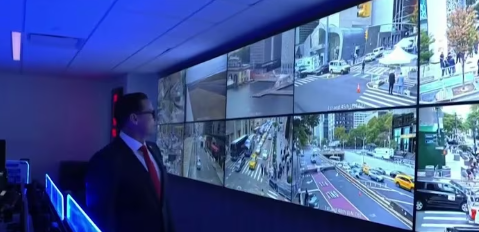Huge SIM Farm Network Dismantled Near New York — What It Means
Law enforcement recently uncovered and shut down a large, hidden telecom operation near New York. The setup—commonly called a “SIM farm”—used many physical SIM cards and servers to create large volumes of mobile traffic. Officials say this network could have disrupted phone service, blocked emergency calls, and helped bad actors hide their communications. This article explains what a SIM farm is, why this discovery matters, how it could harm public safety, and what steps are needed next.
What the Operation Looked Like
Investigators found a compact but powerful system made of racks of servers and thousands of active SIM cards. The devices were arranged so they could pretend to be normal phone users while generating huge amounts of calls, messages, or data. The location was close to major international activity at the time, making the discovery especially urgent.
The network was not one simple device; it was many linked units designed to act in coordination. Because every SIM card was real and registered, the traffic appeared legitimate to phone networks, which made the scheme harder to spot at first.
How SIM Farms Work — Simple Explanation
A SIM farm is a technical setup that holds many SIM cards in one place. Operators connect those cards to computers that control how and when the cards make calls or send messages. With enough cards and automation software, a SIM farm can:
-
Send mass SMS messages that look real.
-
Place many calls to overload phone systems.
-
Mask a user’s identity by routing actions through different SIMs.
-
Create fake traffic to confuse network monitors.
Because the activity uses real, active SIMs, it can blend into normal mobile traffic and hide malicious intent.
Why This Was Dangerous
There are several reasons why such a network is a serious threat:
-
Emergency Services Risk: If an attacker floods phone lines or cell towers, people may not be able to reach emergency numbers. That is life-threatening.
-
Communications Disruption: Large-scale fake traffic can slow or stop regular phone and data services for many users.
-
Covert Messaging: Criminals or hostile groups could use this system to coordinate without easy detection.
-
Difficult Detection: Because the activity looks like normal mobile use, network operators may miss it until it is too late.
The timing and location of the discovery increased concern because many leaders and important events were nearby, which could have made the impact broader.
Who Is Affected?
The immediate victims would be regular phone users in the affected area: people calling family, businesses running mobile services, and emergency responders. Large events and institutions that rely on steady telecom service would also be vulnerable. Beyond the local area, the reputations of mobile networks and the confidence of international visitors can be damaged when such risks become public.
What Authorities Did
Law enforcement acted to remove the hardware and take control of the equipment. Investigators seized servers and SIM cards and began analyzing the data to find who ran the system and how it was used. Agencies worked together quickly to limit the risk and find any links to organized crime or foreign actors.
The goal of the operation was not only to stop this particular setup but also to learn how such systems operate so they can detect and stop others in the future.
What Mobile Companies Need to Do
Telecom providers must boost their monitoring tools to spot unusual patterns of calls and messages that may indicate SIM-farm activity. This includes real-time analytics and better cooperation with law enforcement. Carriers also need clear processes to confirm the legitimacy of bulk traffic and to rapidly block suspicious systems.
Improved registration checks and controls on bulk SIM purchases could make it harder for operators to build these farms in the first place.
What Individuals Should Know
For most users, normal phone use remains safe. Still, people should be aware that:
-
If phone service falters, use alternative contact methods (Wi-Fi messaging, landline, in-person).
-
Stay informed during major events in your area, especially if authorities advise caution.
-
Report unusual call or message behavior to your provider.
Personal vigilance helps, but the main responsibility lies with providers and regulators to maintain secure networks.
The Bigger Picture
This case shows a growing area of risk in modern communications. As mobile technology gets more powerful and more people rely on phones for critical tasks, the incentives for bad actors increase. Governments and industry must work together to create stronger defenses and faster response systems.
The dismantled network serves as a warning: hidden telecom operations can cause real harm, and preparedness is essential.
FAQs
Q1: What exactly is a SIM farm?
A SIM farm is a collection of many SIM cards and servers used together to send large amounts of mobile traffic. Operators use software to control the cards for mass calls, texts, or other telecom actions.
Q2: Can a SIM farm shut down phone service?
Yes. If enough fake traffic targets cell towers or emergency lines, it can slow or block services for real users.
Q3: Who is usually targeted by these networks?
Targets can include the general public, emergency services, businesses, and high-profile events—anywhere disruption would cause major harm or confusion.
Q4: How will investigators find the people behind the farm?
Investigators analyze seized hardware, SIM registrations, payment records, and network logs to trace who rented the space, bought the SIMs, and controlled the servers.
Q5: What should telecom companies do now?
They should add better traffic monitoring, tighten controls on bulk SIM sales, share threat information with authorities, and run drills to respond quickly to sudden telecom attacks.


